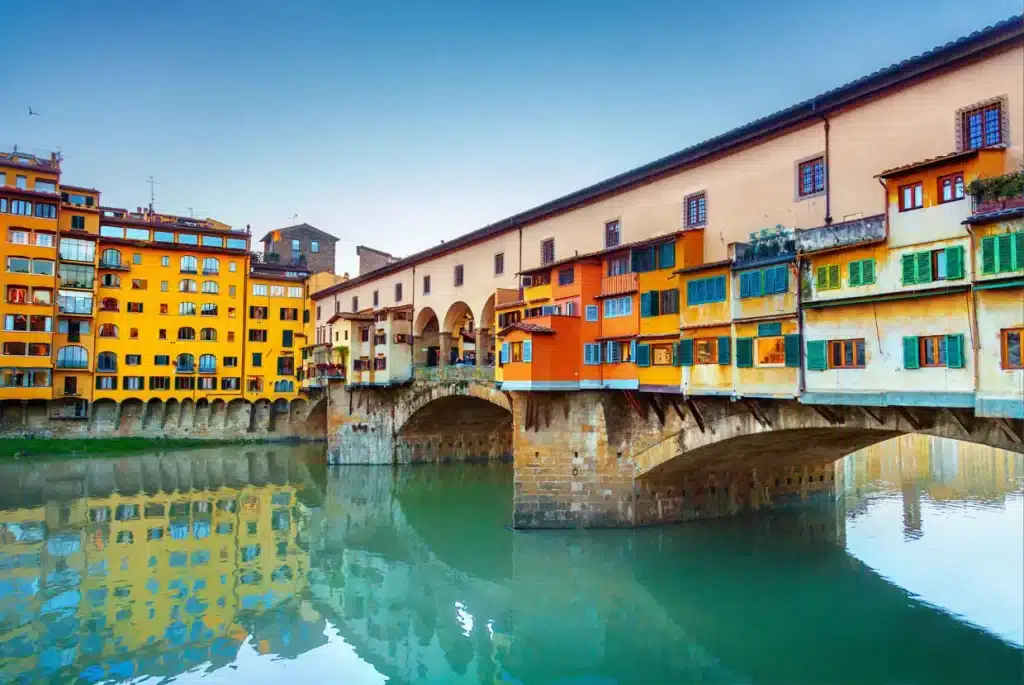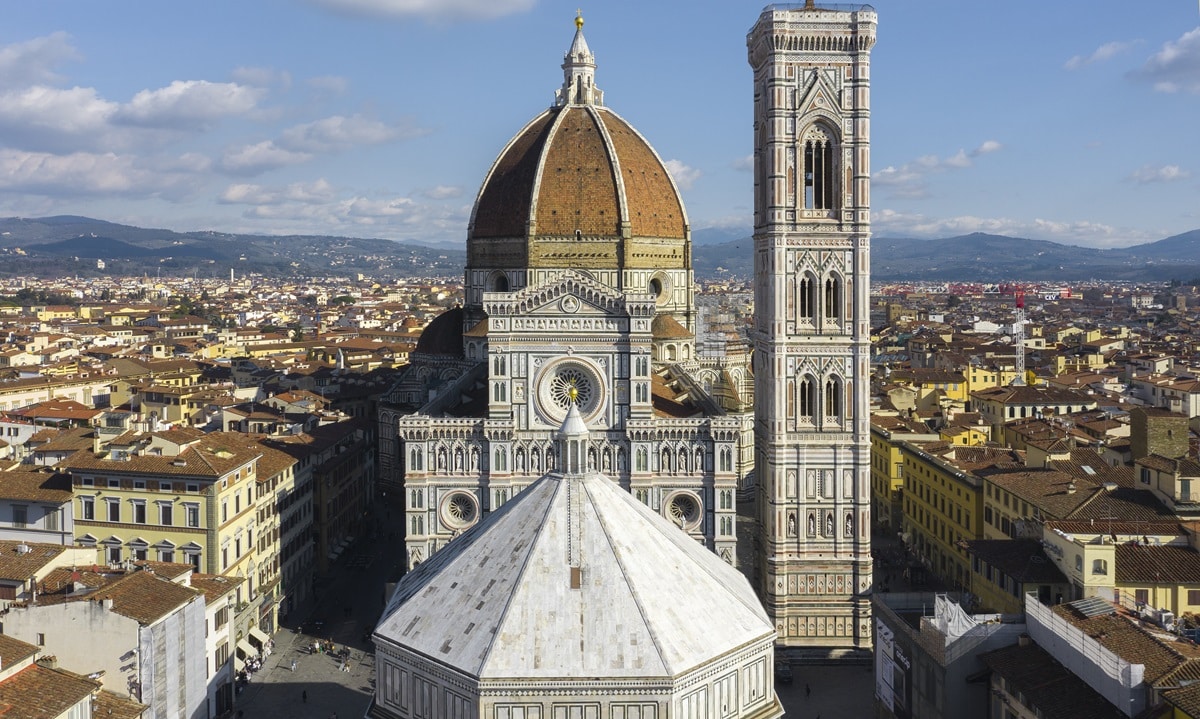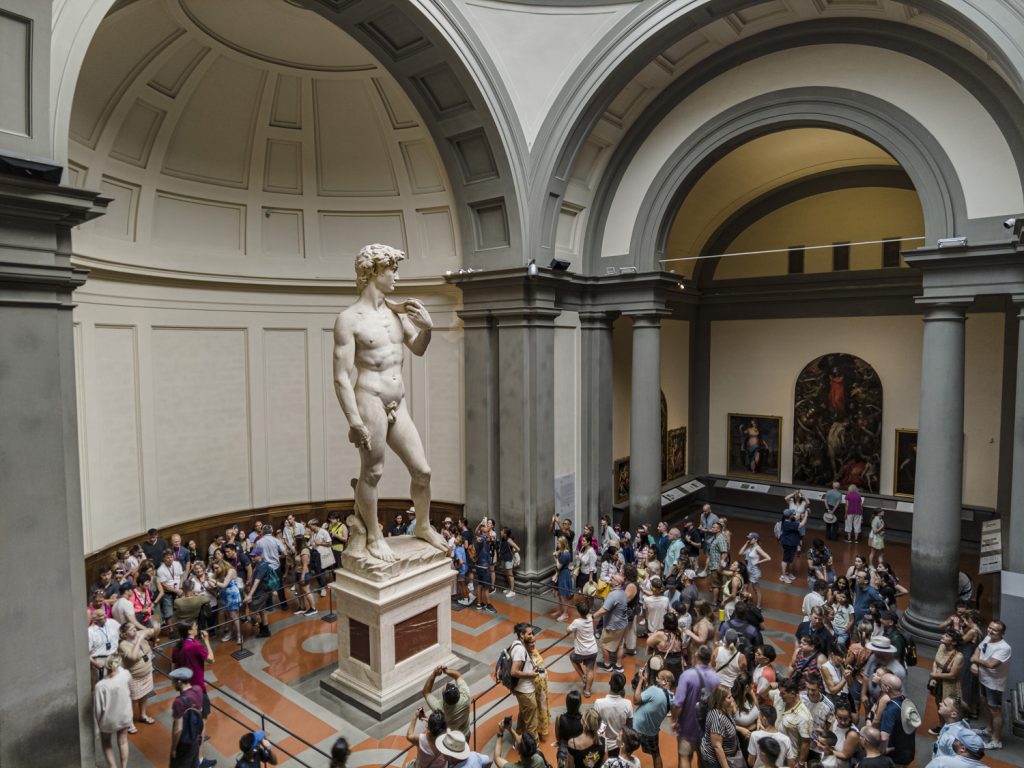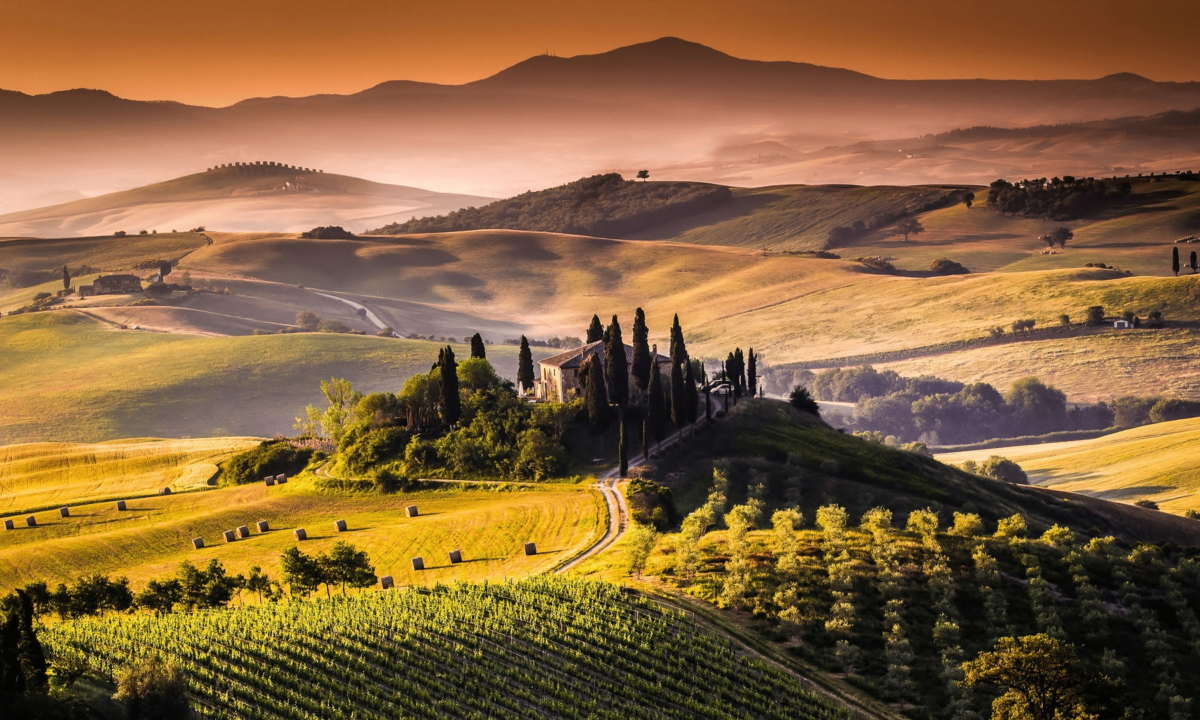This blog post will introduce you to the Ponte Vecchio Bridge in Florence, its history, and a little secret tip on why you should see it.
Did you know?
Firstly, the Ponte Vecchio is undeniably the only bridge in Florence that survived World War II. When Nazi forces began their retreat in late 1944, every other bridge in the city was utterly destroyed.
Local forces, under the directive of the German consul in Florence, took decisive action to delay the Nazi advance by blocking roads and demolishing buildings, creating notable barriers. Consequently, Gerhard Wolfe was rightfully honored as an honorary citizen, and a plaque commemorating him can be found at the bridge.
This historical context is one of the many reasons the Ponte Vecchio stands out as an iconic and significant landmark. It is a remnant from medieval times, symbolizing Florence’s resistance and eternity.

©italiandualcitizenship.net
The most famous bridge in Florence, Ponte Vecchio
The oldest and most impressive bridge in Florence, Italy, is the Ponte Vecchio, which translates to “old bridge.” It was designed by Taddeo Gaddi, a student of Giotto, and was completed in 1345. Furthermore, the bridge is famous for its numerous shops, which blacksmiths, tanners, and butchers initially occupied. These tradespeople used the Arno River in Florence as a landfill. However, due to the noise and stench they created, Duke Fernandino had them removed. They were then replaced by jewelers and goldsmiths, who could pay higher rents.
Note: If you want to know more about the famous Italian bridges, we recommend that you read our guide about Venice – The city of canals and bridges.
History of the famous Ponte Vecchio Bridge
The Ponte Vecchio has stood there since Roman times. Originally wooden, but later they rebuilt it in stone in 1345 after a flood in 1333. It has three arches, the middle being the longest at thirty meters. Additionally, in the center of the bridge stands a bust of Benvenuto Cellini, an Italian artist who began his career as a goldsmith on the Ponte Vecchio. Luckily, the bridge was not destroyed during World War II bombings. However, it suffered significant damage during a flood in 1966, causing considerable gold to be lost in the Arno River.
Love sealed
A fence surrounds the statue of Benvenuto Cellini, where couples in love hang small locks, sometimes with their initials, and throw the key into the Arno. This tradition symbolizes everlasting love between the couple.
The secret passage across the Ponte Vecchio
Readers of Dan Brown’s “Inferno” are probably familiar with the Corridoio Vasariano, known as Vasari’s secret corridor. This elevated passage connects the Palazzo Vecchio with the Pitti Palace, allowing Cosimo I and his family to move between the two palaces without being seen. More impressively, the corridor spans almost a kilometer and was built around the preserved tower of the Mannelli family on the Ponte Vecchio.
Final Thoughts
Ponte Vecchio has a vibrant history and is the most celebrated bridge in Florence. While many tourists visit it during peak season, they only do a little to spoil the experience. These happy faces bring specific energy to the occasion, which helps to produce images of the enthusiastic traders and bustling crowds of Medieval times.
You might see only the bridge here, but the Ponte Vecchio Bridge is much more.
Take a look at

Duomo – The Florence Cathedral
In this article, “Duomo—The Florence Cathedral,” we will provide an overview of the city’s main attraction. Furthermore, we will give

Visit Michelangelo’s David in the Accademia Gallery
In this article, we will introduce you to Michelangelo’s David in the Galleria dell’Accademia in Florence (Tuscany). Furthermore, we will

Planning an ideal trip to Tuscany
Everybody who loves tasty food, history, culture, wine, and breathtaking scenery should add Tuscany to their bucket list. That’s why
References and sources:
Photo credits:
Feature photo Credits ©italiandualcitizenship.net
